Barely a decade after the pioneering flight of the Wright brothers at Kitty Hawk, the world’s first scheduled passenger airline service began in 1914 between St. Petersburg, Florida and Tampa across Tampa Bay. The airline was known as the St. Petersburg–Tampa Airboat Line. The service was short-lived and the airboat that the airline operated was capable of carrying only one passenger at a time, but the value it provided paved the way for modern commercial air flights.

A Model 14 Benoist floatplane flying above Tampa Bay.
The idea for the airline originated with Florida-based electrical engineer, Percival Elliot Fansler, who was working at that time as a sales representative for a manufacturer of diesel engines for fishing boats. Fansler became interested in airplanes while experimenting with high speed boat racing. He realized that the only way to achieve even greater speeds was to take the boats to the air. In 1912, legendary pilot Antony H. Jannus made a record-breaking long distance flight from Omaha to New Orleans. This 40-day trip was widely featured in American newspapers and magazines, and Fansler avidly followed Jannus’s flight along the Missouri and Mississippi Rivers.
Shortly after this historic flight, Fansler contacted Thomas W. Benoist, whose company manufactured the airplane that Jannus flew, expressing desire to buy an airplane. After exchanging a few letters with Benoist, Fansler conceived of the idea of starting a commercial airline service. Benoist became enthusiastic of the idea, and immediately agreed to build and provide two flying boats and crews, while Fansler would select the route and work out all the details.
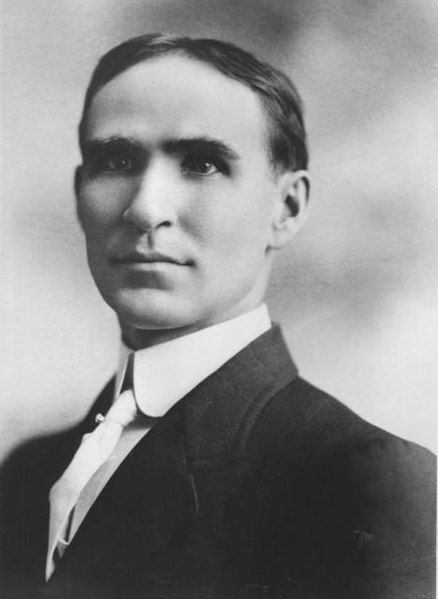
Thomas W. Benoist
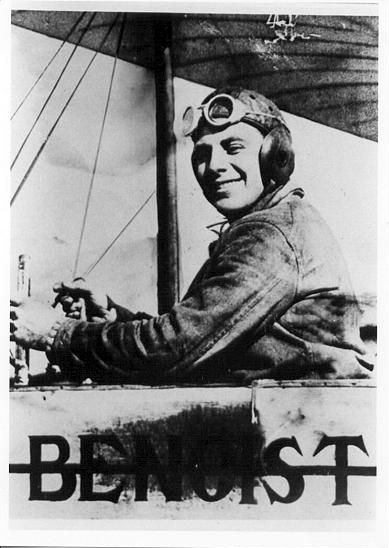
Antony H. Jannus
Fansler decided that a line could be operated between St. Petersburg and Tampa. The distance was about 23 miles, fifteen of which were along the shore of Tampa Bay, and the remainder over open water. Fansler first went to Tampa to present his idea to city officials and businessmen, but found no one there was interested in issuing an airline franchise. He then went to St. Petersburg, then a city of about 9,000. The officials of St. Petersburg was warm to the idea, and in many ways, Fansler realized, that St. Petersburg was the most ideal city for an airline. The winter weather was good, and the city was flocked with tourists who formed a pool of potential customers. Most importantly, St. Petersburg, located at the tip of a peninsula, remained effectively isolated from the rest of the world. The trip from St. Petersburg to Tampa by steamer took 2 hours, and 12 hours by train. The drive by automobiles was unthinkable, given the condition of the roads and the relatively premature technology of automobiles itself. A trip by airplane would take only twenty minutes.
Fansler convinced twelve businessmen from St. Petersburg to put up $100 each to back the airline scheme. He received another $1,200 from the secretary of St. Petersburg’s Board of Trade. An agreement was quickly signed according to which the Benoist company would supply the planes and the pilots and would maintain two scheduled flights daily between St. Petersburg and Tampa, six days a week for three months. For each day that the airboats flew, Fansler’s backers agreed to pay the airline $40 a day during January and $25 a day thereafter. The service was to begin on January 1, 1913.
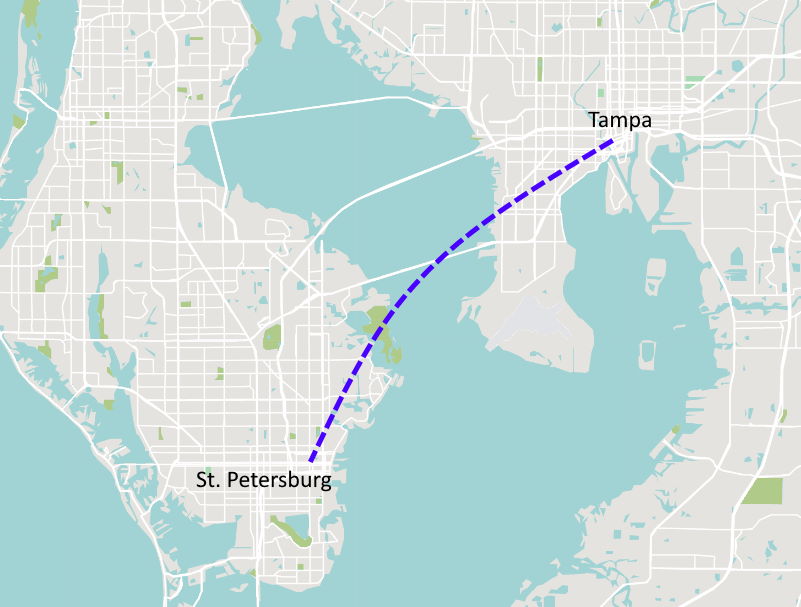
The route of the world’s first scheduled flight.
Benoist arranged for one of his airplanes to be shipped by train to St. Petersburg. The Model 14 Benoist airboat No. 43 arrived at the St. Petersburg freight yard on December 30, just two days before the scheduled beginning of the airline. The airplane was powered by a 75-horsepower engine, that gave her a top speed of 64 mph. It weighed 1,250 pounds (567 kg), was 26 feet long and had a wingspan of 44 feet. The hull was constructed of three thicknesses of spruce with doped fabric layered between them. Six water-tight compartments in the hull made the craft buoyant in the water. Although the plane was built to hold only a pilot and one passenger on a single seat, sometimes two small passengers could be accommodated.
On January 1, some 3,000 people gathered at the municipal pier to see off former Mayor Abraham C. Pheil, who was to be the first passenger. Phiel had bagged the only ticket by winning the auction of the same with a bid of $400. The airline donated the money to the city for the purchase of harbor lights.
Before the flight began, Fansler addressed the crowd. He said: “The Airboat Line to Tampa will be only a forerunner of great activity along these lines in the future. A new factor in transportation has come above the horizon – literally – and within a few days the air above Tampa Bay and its tributaries will be filled with swiftly moving craft carrying passengers on a regular schedule at rates little above those charged for land trips in hired automobiles.”
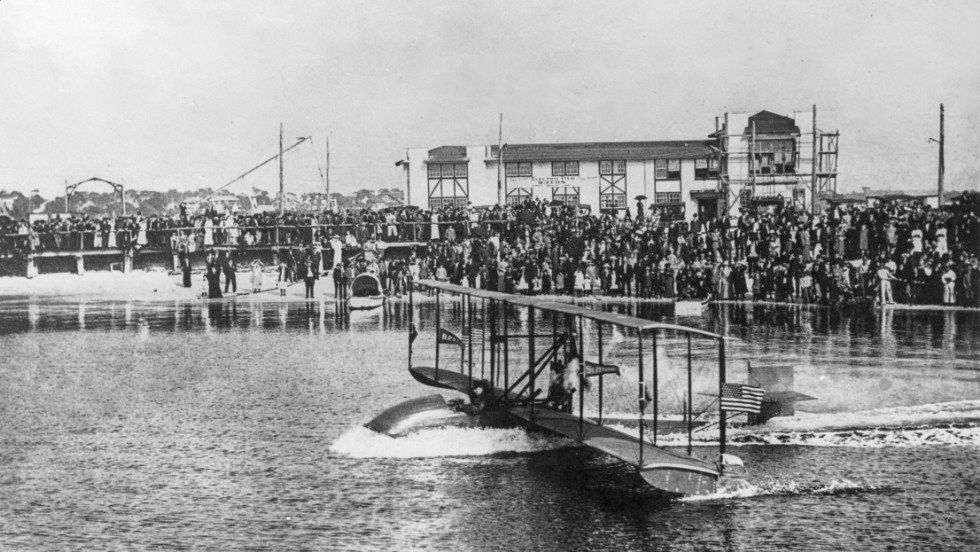
Pilot Jannus begins his takeoff run for the first flight by a scheduled airline in history.
At exactly 10 a.m., Jannus taxied the airboat out of the harbor and soon was on its way to Tampa. Less than half an hour later, the flying boat touched down on the Hillsborough River in Tampa. An even bigger crowd of 3,500 spectators was awaiting Jannus arrival. After exchanging greetings with Tampa mayor and posing for a few photographs, Jannus and Pheil returned back to St. Petersburg before another cheering crowd. Decades later, Pheil’s wife, Mrs. Lottie C. Pheil recalled her husband’s eagerness and her fear. She remembered, “He had talked about it for several days. He was dead set on going. I was home when the bidding was conducted for the honor of being the first passenger, and did not know that he had bid the highest. When I got there, he was in the plane
about to take off. I was worried all the time he was gone.”
The same day, another flight took off from St. Petersburg taking Noel A. Mitchell on a successful round-trip across the Tampa Bay. The next day, Mae Peabody of Dubuque, Iowa, flew to Tampa becoming the first woman passenger to fly on a fixed-wing scheduled airline.
Regular operation of the airline commenced at once. The price of a one-way ticket was fixed at $5. Passengers were allowed a maximum weight of 200 pounds gross, including hand baggage. Anything over that weight was charged at $5 per hundred pound. While $5 per trip was high compared with the cost of rail or steamship, it barely covered the costs of operations. When Tom Benoist was asked how he intended to make profit, he stated, “There are at present about 30,000 tourists in the area and I believe a great many of them will patronize the airboat line to save time. Besides, I am anxious to demonstrate the capability and practicality of aerial transportation at a price anyone can afford even if such a low rate means a revenue loss to me, for today’s loss could very well be tomorrow’s profit.”

From left to right: P.E. Fansler, former St. Petersburg Mayor A.C. Phiel, and pilot Antony H. Jannus stands next to the Benoist XIV flying boat on January 1, 1914.
The demand for the service was so high that two additional flying boats were pressed into service toward the latter part of January. The airline operated successfully for three months, during which it made a total of 172 regular trips, ferrying 1,205 passengers and clocking an estimated 7,000 air miles.
“The St. Petersburg-Tampa Airboat Line was not only the first scheduled airline in the world, but it also was the first subsidized airline, the first airline to be regulated by the government and the first airline to require government licensing of its pilots,” writes Thomas Reilly in Tampa Bay History. “In addition, the St. Petersburg-Tampa Airboat Line’s insistence on safety-first produced the so-called pilot’s choice in which the decision to fly or not fly was left to the pilot. The airline proved the dependability, practicality and safety of scheduled air service.”
After the success of the St. Petersburg-Tampa Airboat Line, Benoist and Jannus initiated the development of a large new flying boat capable of transatlantic flight. The two men developed the Type XV flying boat, capable of remaining aloft for 40 hours with six passengers on board. But before it could fly, World War I broke out. On October 1916, Jannus was using a Curtiss H-7 to train Russian pilots, when he had engine problems and crashed into the Black Sea, killing him and his two students. His body was never recovered. Benoist met a similarly unfortunate fate. In 1917, he was fatally injured when he was struck by a telephone pole when riding in a streetcar. He died within three hours of the accident.
A plaque at the entrance to St. Petersburg International Airport today proudly proclaims: “The Birthplace of Scheduled Air Transportation.” A replica of the historic Benoist No. 43 airplane hangs at the airport terminal baggage claim area. Another replica is on display at the St. Petersburg Historical and Flight One Museum. There is also a monument to this historic flight at Benoist Centennial Plaza in St. Petersburg.
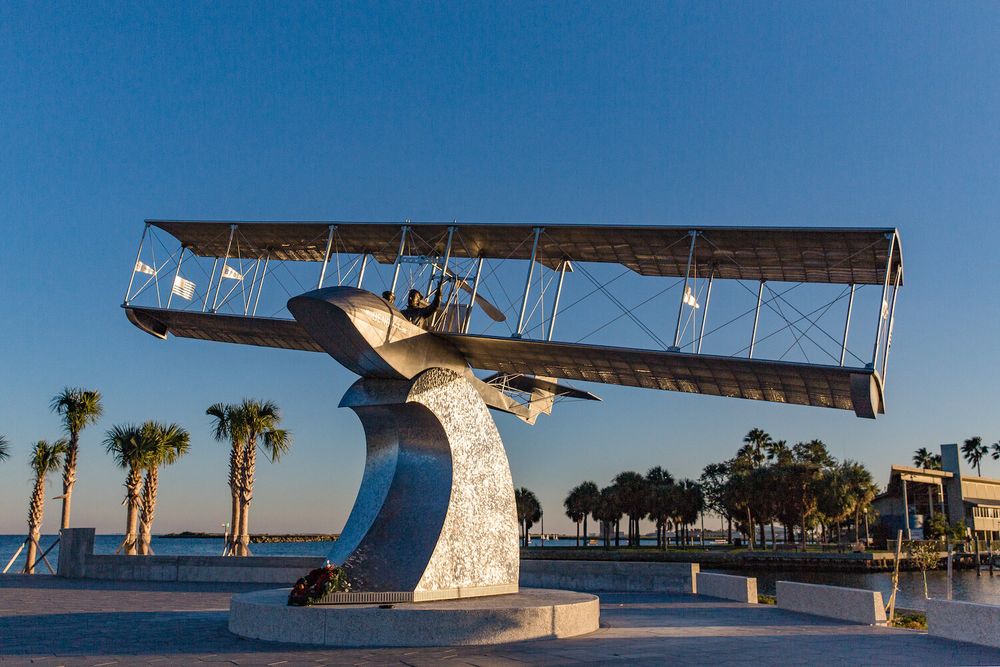
The World’s First Airline Monument at Benoist Centennial Plaza, Pier District - St. Petersburg. Photo: The City of Saint Petersburg
References:
# Eugene F. Provenzo Jr., “The St. Petersburg-Tampa Airboat Line”, The Florida Historical Quarterly
# Thomas Reilly, “The St. Petersburg-Tampa Airboat Line: 90 Days that Changed the World of Aviation”, Tampa Bay History
# The story of the world's first airline, International Air Transport Association
# St. Petersburg Tampa Airboat Line: World’s First Scheduled Airline Using Winged Aircraft, HistoryNet












Comments
Post a Comment